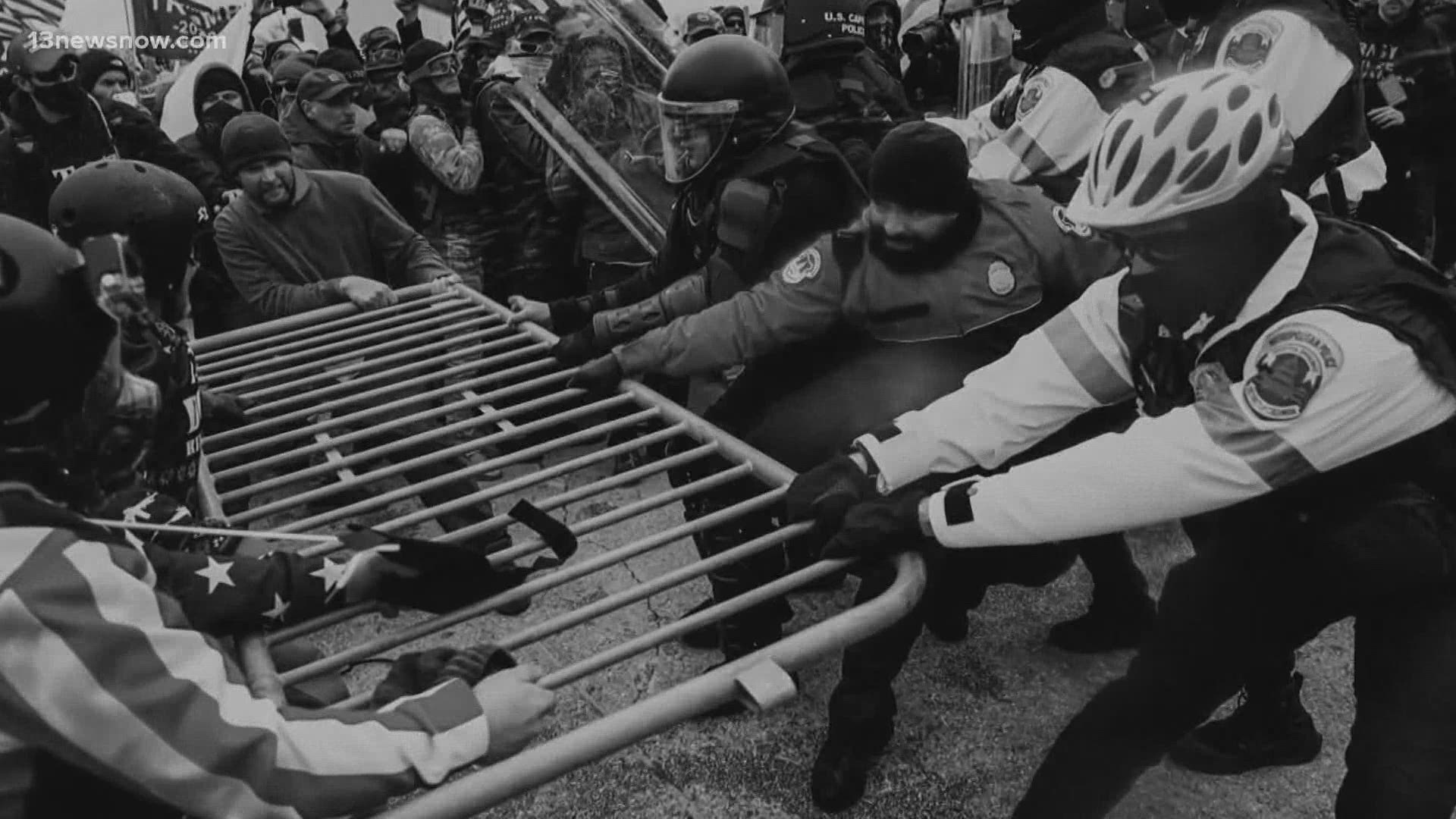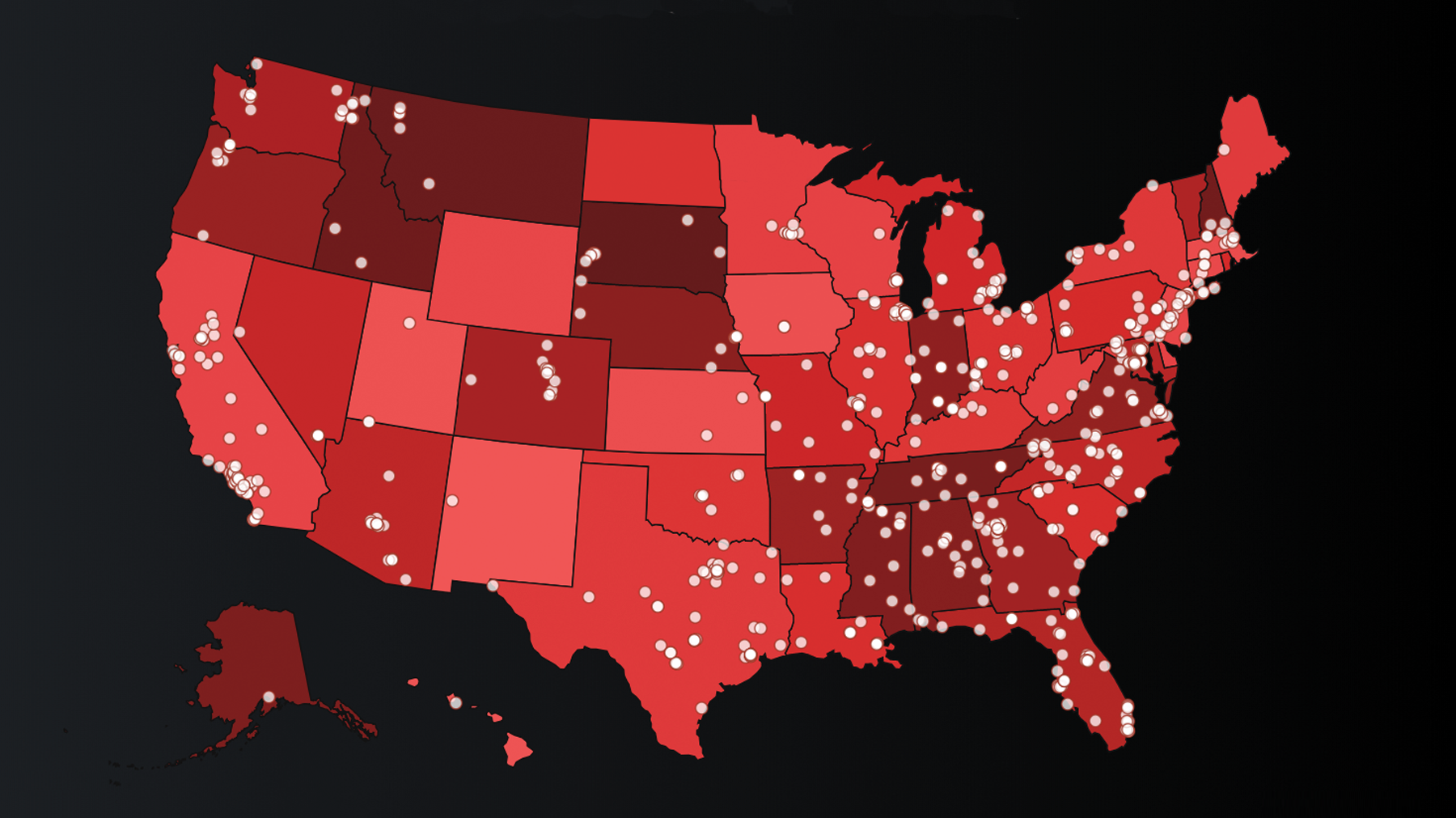WASHINGTON — A protest ignited an insurrection at the U.S. Capitol on Jan. 6. Experts in domestic extremism say the explosive potential that erupted last month didn’t just come from nowhere; though – it had been building for years.
Months before the insurrection at the Capitol, former President Donald Trump’s FBI director, Christopher Wray, warned Congress of the growing domestic threat posed by violent extremism.
“In recent years we’ve been laser-focused on threats by racially motivated or ethically motivated extremists,” Wray testified in September.
Since taking office, President Joe Biden has announced a new crackdown on homegrown terrorism in the country.
“The rise of domestic violent extremism is a serious and growing national security threat,” White House Press Secretary Jen Psaki told a room of reporters as she announced a new initiative to combat the extremism.
A review of court documents filed in the now 100+ cases against alleged Capitol rioters offers insight into the role domestic violent extremist organizations played in the attack on the Capitol.
Proud Boys leader Enrique Tarrio was tossed out of the DIstrict the day before the insurrection, but he said that wouldn’t stop his group.
“We’re gonna keep fighting,” Tarrio told reporters shortly after being released from jail on Jan. 5. “I don’t need to be in D.C. to keep the fight going.”
The FBI has identified at least four other alleged Capitol rioters as Proud Boys so far, including Proud Boys organizer Joseph Biggs and Seattle chapter sergeant-at-arms Ethan Nordean. At least two Proud Boys – Dominic Pezzola and William Pepe – have been charged with conspiracy in connection with the Capitol riot.
The Proud Boys are among 13 defendants tied to right-wing domestic extremist or white supremacist organizations who have been arrested and charged by federal prosecutors in connection with the Capitol riot.
Last week, Canada officially classified the Proud Boys as a terrorist entity – in part because, it said, the group played “a pivotal role” in the insurrection at the U.S. Capitol.
RELATED: Canada designates the Proud Boys as a terrorist entity
More than 150 others arrested in the Capitol riot have now been identified by the FBI as radicalized militants without specific ties to any one organization.
“These extremist groups are the engine, the pumping heart of the extremism that we saw activated on the hill,” said Doron Ezickson, director of the Anti-Defamation League’s Washington, D.C., regional office. “But they were not the only ones present.”
Just last week, the Southern Poverty Law Center released its Year in Hate and Extremism report. The SPLC identified 838 hate groups operating across the U.S. in 2020, which is down from recent years but still a serious threat.
The SPLC lists 15 different hate groups operating in Maryland, 19 in the District and 33 in Virginia.
The Armed Conflict Location & Event Data Project (ACLED), another group that tracks political violence and protests, is also tracking the activity of extremist organizations.
Per ACLED, there were six protests in Virginia between Jan. 1, 2020, and present that involved either the Proud Boys, Boogaloo Boys, Three Percenters or other militia groups. D.C. had five protests and two riots over that period involving the same groups; Maryland had none.
That puts D.C. in a tie for 8th place and Virginia in a tie for 13th in terms of the number of events involving these groups. By comparison, Oregon and Washington -- which have seen sustained conflicts between these groups and left-wingers -- have had more than 20 protests each involving those groups over the same time period.
Still, ACLED ranked Virginia as one of five states nationwide with a moderate risk of increased militia activity.
One of those alleged militia members, 65-year-old Thomas Edward Caldwell from Clarke County, Virginia, is now charged as a co-conspirator in the attack on the Capitol. Caldwell is accused of plotting with two other members of an extremist group known as the Oath Keepers to forcibly enter the Capitol to disrupt the congressional certification of Biden’s electoral win.
Court documents allege Caldwell, or “Commander Tom,” has a leadership role in the Oath Keepers. Federal investigators say they’ve obtained communications between Caldwell and his two co-defendants on Facebook coordinating their activities on Jan. 6 going back at least two weeks before
The three also allegedly hid out at Caldwell’s Clarke County home before they were arrested. Caldwell was denied release by a judge to protect public safety and remains in jail awaiting trial.
“The threat is not going away,” Ezickson said. “It exists as we speak.”
Ezickson said monitoring the growing threat from domestic extremism won’t just take more resources – it will require communication and collaboration between local, state and federal law enforcement. Ezickson said that’s the best way to stop more violence like what happened in D.C. last month.


